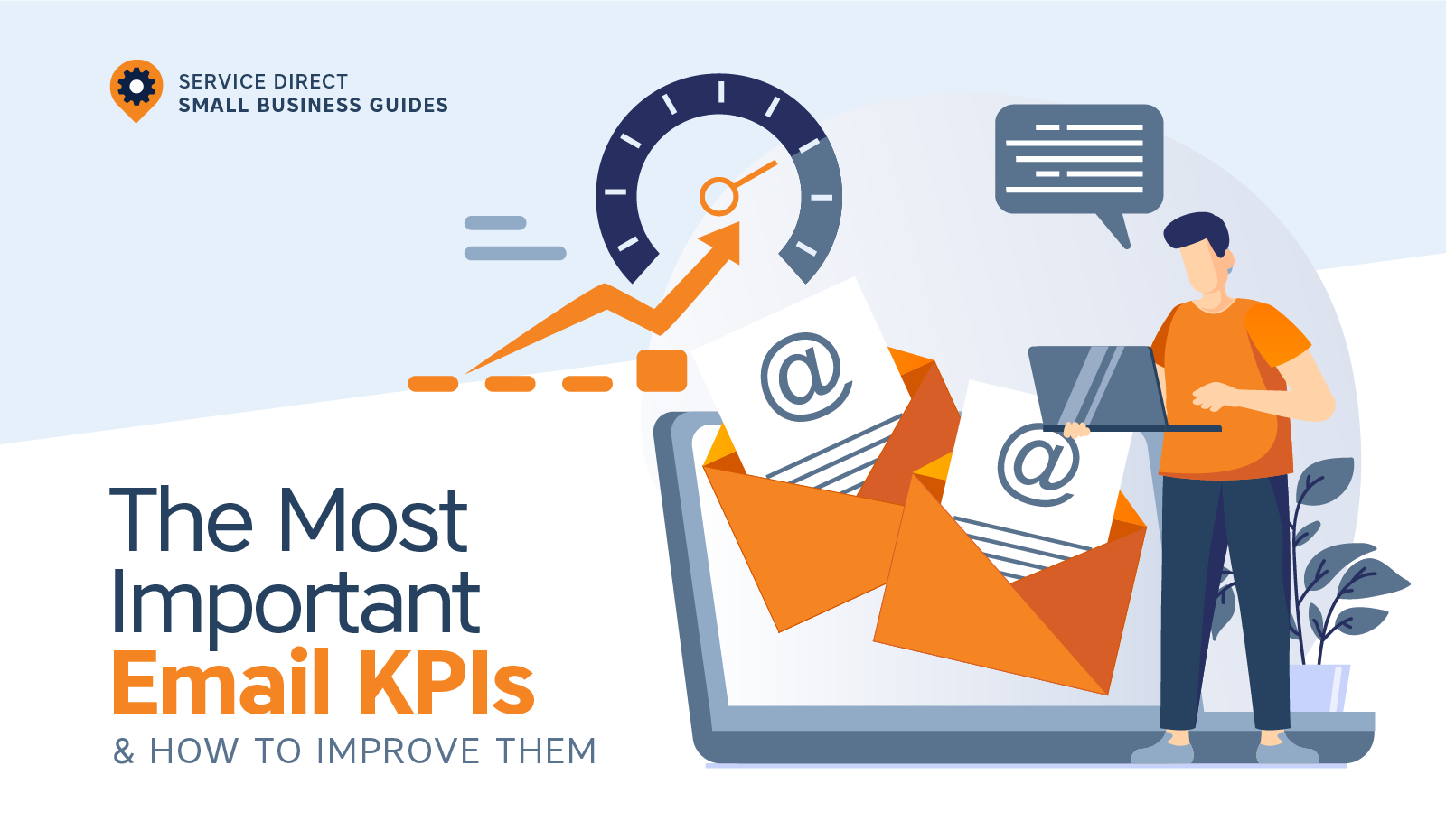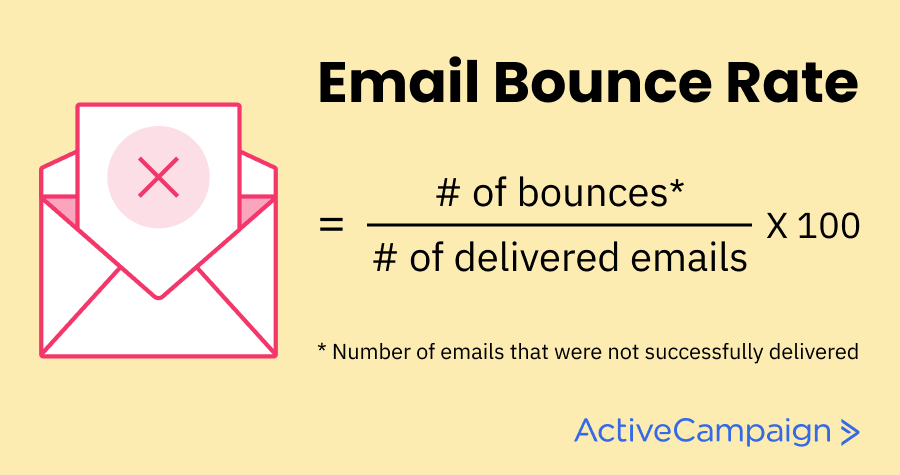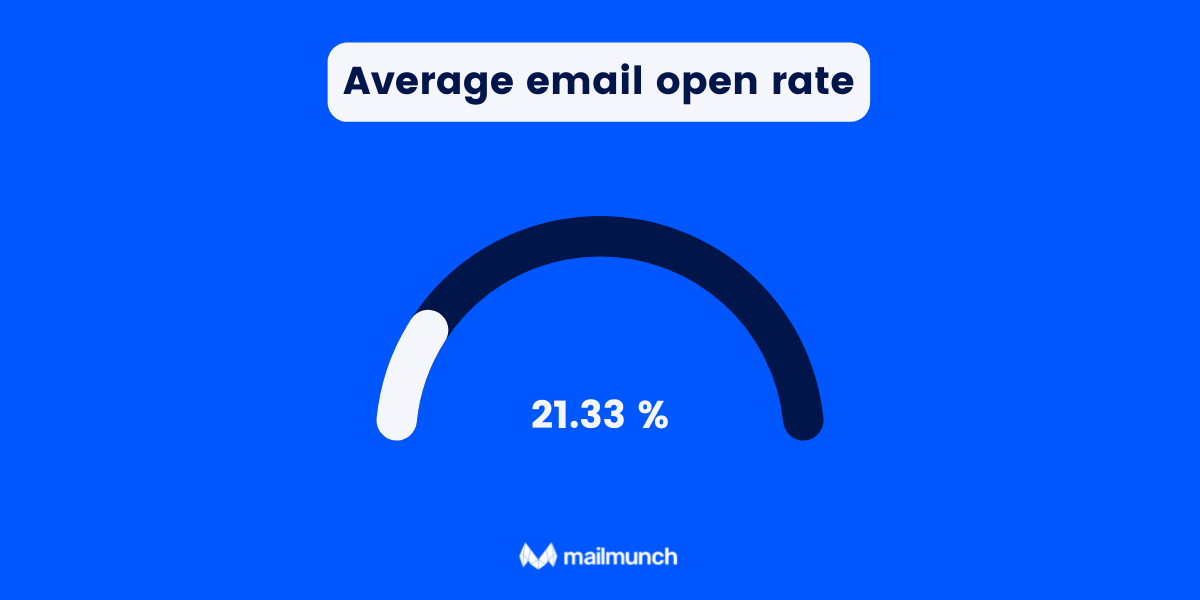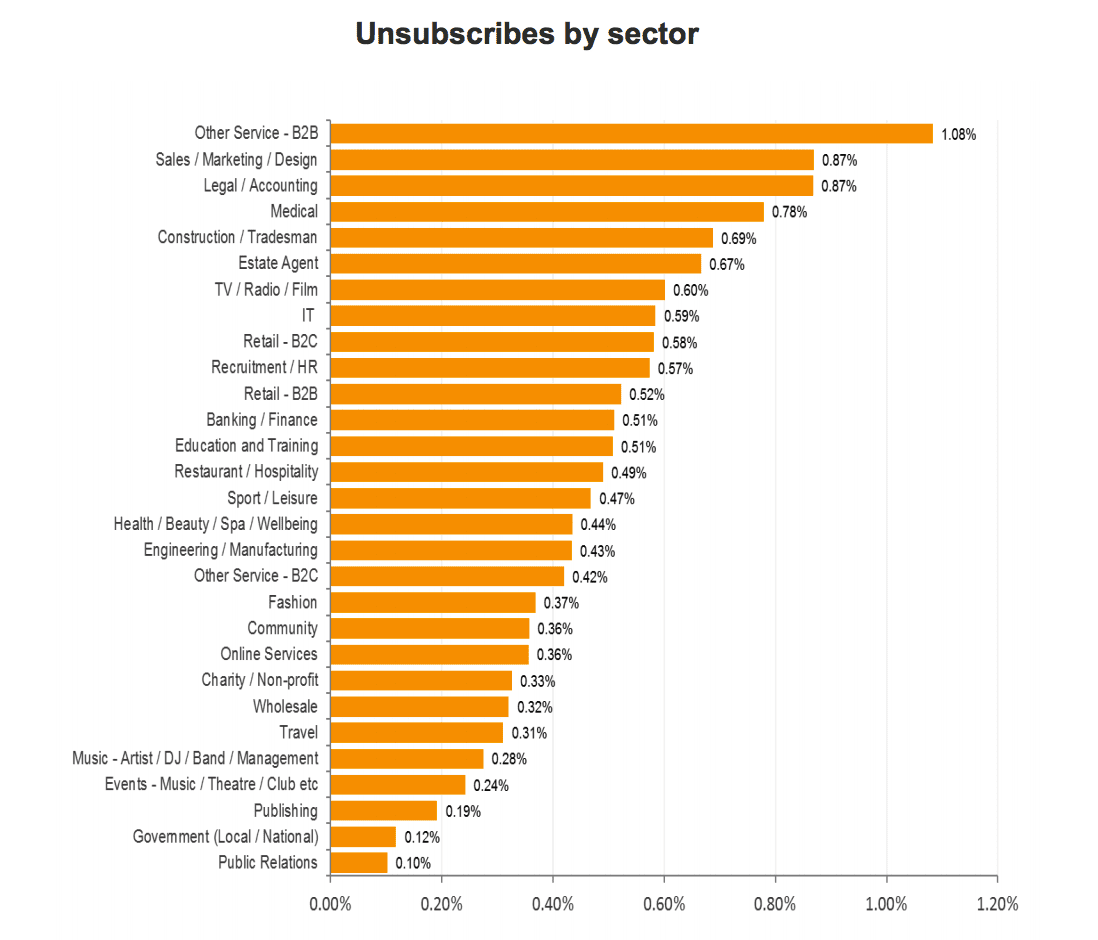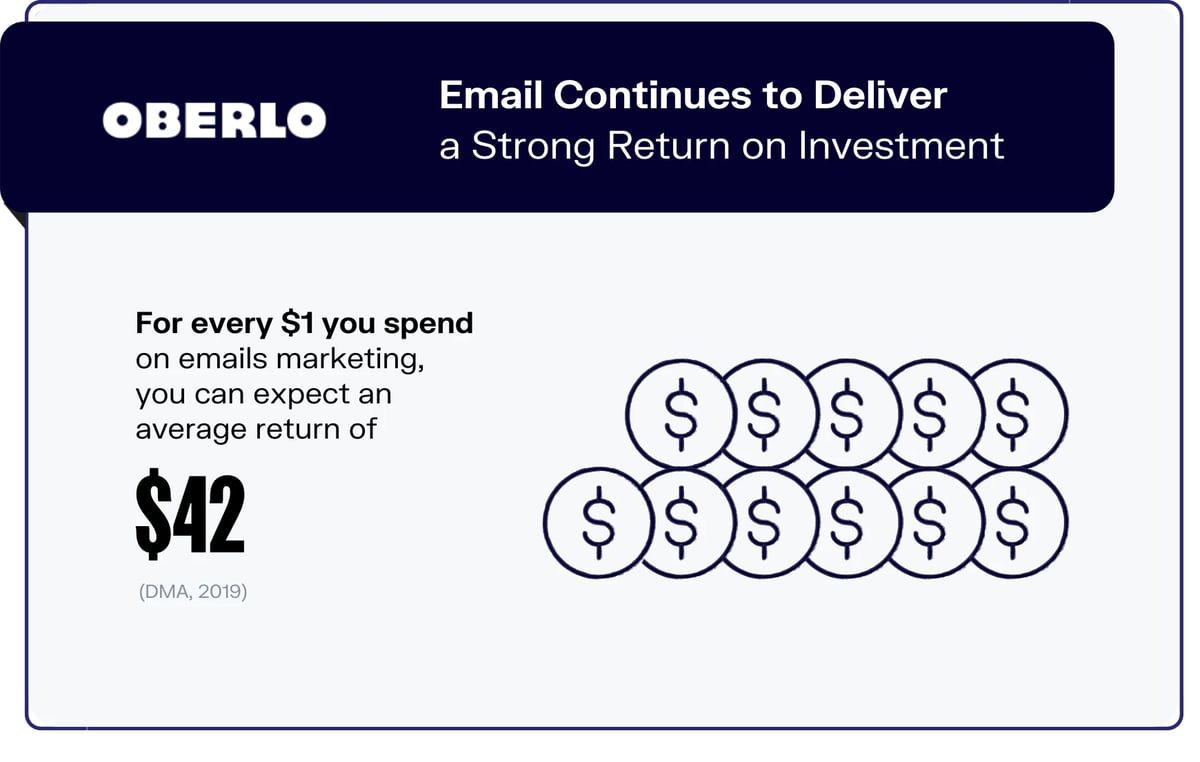The Most Important Email KPIs & How to Improve Them
Email marketing is an important tool for any business. It's a great way to keep in touch with customers, promote new products or services, and increase brand awareness. But if you're not measuring your email marketing KPIs, you're missing out on a lot of valuable data.
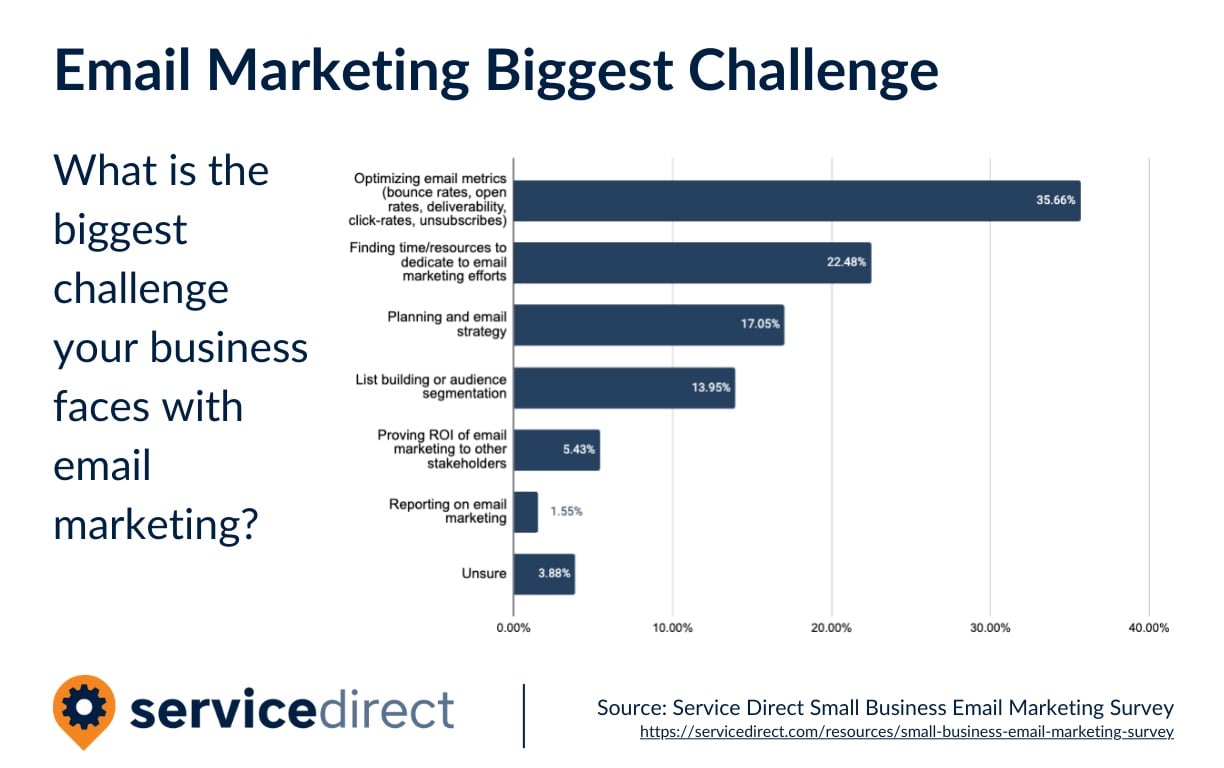
In a recent survey we performed amongst small business marketers, they reported that optimizing email KPIs was their biggest challenge.
In this article, we'll discuss the most important email KPIs and how to improve them. We'll also give you tips and tricks on how to measure these KPIs using tools like Google Analytics and MailChimp. So read on to learn more!
What Are KPIs?
Email KPIs are “key performance indicators” that business professionals use to measure the success of their email marketing campaigns. There are a variety of Email KPIs, but some of the most important include:
- deliverability rate
- open rate
- click-through rate
- unsubscribe rate
- complaint rate
- among others...
By tracking these KPIs, businesses can identify areas of improvement for their email marketing campaigns and make necessary changes to improve results.
Additionally, email KPIs can help businesses compare the performance of their email campaigns against industry benchmarks and make necessary adjustments to stay competitive.
Do They Really Matter?
Email KPIs are critical for any business looking to improve their email marketing strategy. By understanding and measuring the email KPIs that matter most to your business, you can make data-driven decisions that will help grow your business.
Email KPIs can help businesses understand how effective their email campaigns are, identify areas for improvement, and track the progress of their email marketing efforts over time.
With so much potential to impact the bottom line, it's clear that email KPIs should be a key part of any business's email marketing strategy. Here are the top benefits of using KPIs for your email marketing strategy:
- Help set goals and plan
- Measure performance
- Measure patterns over time
- Improve your strategy
To set email KPIs, first identify your goals. What do you want to achieve with your emails? Next, decide which metrics will help you measure your progress towards these goals. Email open rate, click-through rate, and unsubscribe rate are all important metrics to track.
Finally, measure your performance over time and make changes to your strategy based on your findings.
How to Improve the Top 8 Email KPIs
Email is one of the most commonly used tools in business communications. It's fast, efficient, and has a wide reach. However, email can also be a source of frustration, as it can be easily misused or misunderstood. To avoid these problems, it's important to know the key performance indicators of email.
By understanding email KPIs, you can ensure that your email communications are effective and efficient.
Here are the 8 most important Email KPIs that you should be tracking…
Bounce Rate
Email bounce rate is one of the most important email KPIs (Key Performance Indicators). It's a metric that tells you how many of your email campaigns' total sent emails "bounced" or could not be delivered.
Email bounces can happen for a variety of reasons - an invalid email address, a full mailbox, or a problem with the receiving server.
Email bounce rate is beneficial to track because it's a good indicator of the health of your email list. A high email bounce rate could mean that your email list is old and needs to be refreshed, or that there are too many invalid email addresses on it.
There are a few key ways to improve Email bounce rate:
1) Keep your email list clean - regularly remove invalid or inactive email addresses from your list.
2) Use double opt-in to confirm new subscribers' email addresses.
3) Monitor email deliverability carefully - if you notice a sudden spike in email bounces, there may be a problem with your email campaign.
By following these simple tips, you can improve your email bounce rate and have a better email marketing strategy overall!
Number of Emails Delivered
Email delivery rate is the percentage of emails that are successfully delivered to recipients' inboxes. Tracking email delivery rates is essential for any organization that relies on email to communicate with customers, partners, or employees.
The benefits of tracking email delivery rates include understanding which ISPs (internet service providers) are blocking or filtering emails, identifying technical issues that are causing emails to be rejected, and increasing the chances that emails will be seen and read by recipients.
There are a few key things that companies can do to improve their email delivery rates, including developing a strong sender reputation, using authenticated sending domain names, and following best practices for managing bounced emails.
By taking these steps, businesses can ensure that more of their emails reach the intended recipient, leading to improved communication and increased chances for success.
Open Rate
Email open rate is one of the most important email KPIs. It's a measure of how often subscribers open your emails. Email open rate tells you how successful you are at engaging your audience.
The benefits of tracking open rate are that it allows you to see which subject lines are effective, which lines generate more opens, and which email types perform best. You can also use open rate data to improve deliverability and troubleshoot any technical issues that may arise.
To improve email open rate, start by segmenting your list so that you're only sending relevant emails to subscribers who are interested in that topic.
Also, make sure to send emails on a regular basis and test different subject lines and email types to see what works best for your list.
Finally, send your emails at times when your readers are most likely to be engaged with their inboxes. Globally, the highest email rates are on Fridays (nearly 19%), compared to Saturdays which show the lowest open rates at 17%. Experiment with different times and days of the week to find what works best for your audience.
By following these simple tips, you can maximize your Email open rate and grow your business.
Unsubscribe Rate
Unsubscribe rate is the percentage of recipients who clicked the unsubscribe link in your email.
There are a number of benefits to tracking unsubscribe rates. First, it allows you to gauge the effectiveness of your email content. If you see a sudden spike in unsubscribes, it's likely that your email content is not resonating with your audience.
Second, tracking unsubscribe rates can help you identify any technical issues with your email campaigns, such as incorrect email addresses or broken links.
Finally, monitoring unsubscribe rates can also give you insights into how your email list is growing (or shrinking). If you see a steady decline in unsubscribe rates over time, it's a good sign that your email marketing efforts are paying off and that your business is growing.
There are a few key ways to improve email unsubscribe rates. Make sure that your email content is high-quality and relevant to your audience. Also, make it easy for people to opt-out of receiving emails by including an unsubscribe link in every email.
Finally, be sure to send emails regularly and keep your email list up-to-date to ensure that people don't forget about you or opt-out due to inactivity. By tracking and improving email unsubscribe rate, you can get the most out of your email marketing efforts and grow your business.
Clickthrough Rate
First and foremost, email click-through rate is an email marketing metric that measures the number of times a recipient clicks on a link contained in an email message.
Email click-through rate is used to track the success of email campaigns and ultimately improve conversions.
There are numerous benefits of tracking email click-through rate. For example, email click-through rate can help marketers understand how effective their subject lines are, what time of day yields the best results, and which call-to-action is most successful.
Additionally, by A/B testing different elements of email campaigns, marketers can further optimize their efforts to improve results.
There are a few simple steps that can be taken to improve email click-through rate. First, focus on creating compelling subject lines that accurately reflect the content of the email.
Secondly, make sure the email content is clear, concise, and relevant to the recipient. Finally, include a strong call-to-action that incentivizes the recipient to click through to your website or landing page.
Studies have shown that new product and feature announcement marketing emails gave the highest click-through rate. By taking these steps, you can maximize your email marketing efforts and reach your business goals.
Conversion Rate
Email conversion rate is a key metric to track for email marketing success. Why? Because email conversion rate helps you understand how many email subscribers are actually taking the desired action from your email - whether that's completing a purchase, signing up for a webinar, or downloading a white paper.
Simply put, email conversion rate is the percentage of email recipients who take the desired action out of the total number of email recipients.
To calculate email conversion rate, divide the total number of email conversions by the total number of email addresses on your list.
For example, if you have 1,000 email addresses on your list and 10 people convert, your email conversion rate would be 1%.
There are a few key benefits of tracking email conversion rate:
1) it allows you to identify which email campaigns are most successful in terms of driving conversions.
2) it helps you to benchmark your performance over time, so you can see whether you're making progress in terms of increasing conversions.
3) it provides data that can be used to inform future email marketing efforts and make them more effective.
Here are a few helpful tips for improving email conversion rates:
- Keep your emails short and sweet: Long emails tend to get skimmed (if they're opened at all). Keep your emails focused on one topic and make it easy for recipients to find the information they're looking for.
- Use strong calls to action: A strong call to action (CTA) is essential for getting recipients to take the desired action. Make sure your CTA is clear and visible - avoid burying it at the bottom of your email.
- Personalize your emails: Personalized emails perform better than generic emails - so make sure you're using personalization tokens when sending mass emails. At the very least, include the recipient's first name in the subject line and throughout the email body.
- Test, test, test: A/B testing is essential for finding out what works best with your audience. In fact, A/B testing and spam testing emails leads to a higher ROI. Your ROI can increase 28% higher when you take the time to test your emails. Try testing different subject lines, CTA copy, CTA placement, images, etc. to see what gets the best results.
Monitor your results: In order to know what's working (and what isn't), you need to be tracking your email KPIs - including email conversion rate. Use an email marketing platform like Mailchimp or Constant Contact that provides detailed reporting features so you can see how well each campaign performs.
Overall ROI
Email ROI is a measure of the profitability of email marketing campaigns. It can be used to calculate the return on investment (ROI) of an email campaign, as well as to track the performance of email campaigns over time.
Email ROI is calculated by dividing the total revenue generated by an email campaign by the cost of the email campaign. The result is then expressed as a percentage.
There are several benefits to tracking email ROI. Firstly, it allows businesses to see how effective their email marketing campaigns are in terms of generating revenue.
Secondly, it enables businesses to compare the performance of different email campaigns, and to identify which campaigns are more successful in terms of generating ROI.
Finally, tracking email ROI can help businesses to improve the overall ROI of their email marketing campaigns, by identifying areas where improvements can be made.
There are several ways to improve the overall ROI of email marketing campaigns. One way is to increase the conversion rate of email leads into customers. This can be done through targeted lead nurturing and lead conversion strategies.
Another way to improve email ROI is to focus on improving customer lifetime value (CLV). This can be done through strategies such as upselling and cross-selling to existing customers, or through loyalty programs that encourage customers to continue doing business with a company.
Finally, businesses can also improve email ROI by increasing the number of emails that are opened and read by recipients. This can be done through A/B testing and other email optimization techniques.
Shares and Forwards
Shares and forwards are email KPIs that can give you insights into how your email campaigns are performing. Forwarding indicates that someone found your email valuable enough to share it with others, while shares show that someone found your email interesting enough to post it on social media.
The benefits of tracking email shares and forwards include:
- Helping to measure email engagement and the effectiveness of your email content.
- Identifying email content that is most popular with subscribers so you can replicate that in future email campaigns.
- Allowing you to see which subscribers are the most engaged and more likely to act on your emails.
By tracking shares and forwards, you can get valuable insights into what works well and use those insights to grow your business.
Wrapping Up...
Email KPIs are crucial to the success of your email marketing campaigns. By following all the tips in this blog post, you can improve your bounce rate, conversion rate, open rate, and more!
We wish you luck on your email marketing journey and hope that these tips help you achieve great success.

